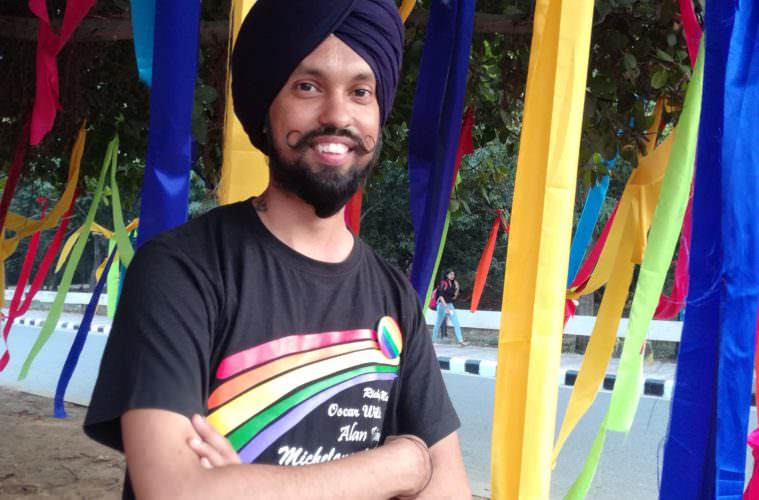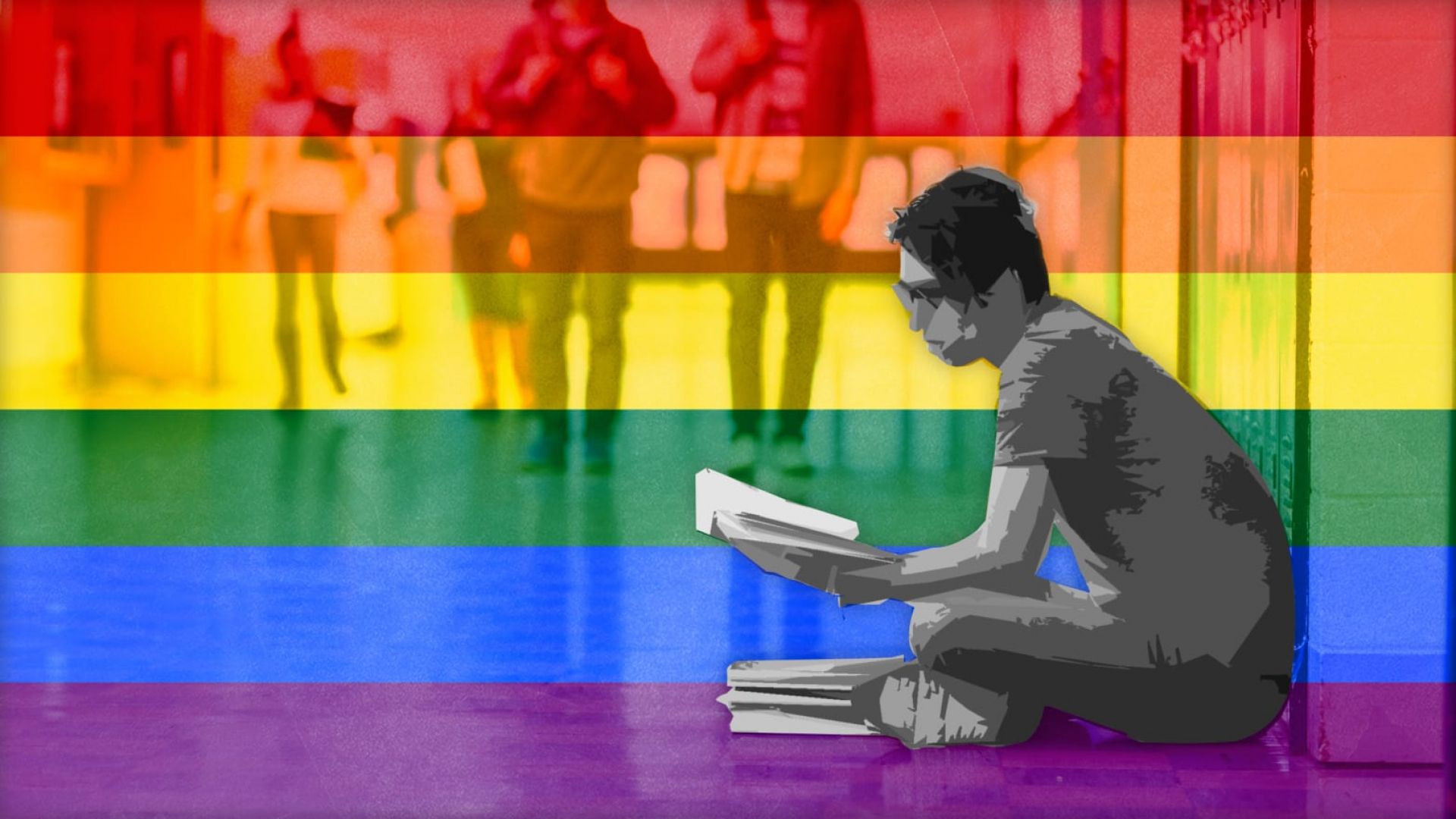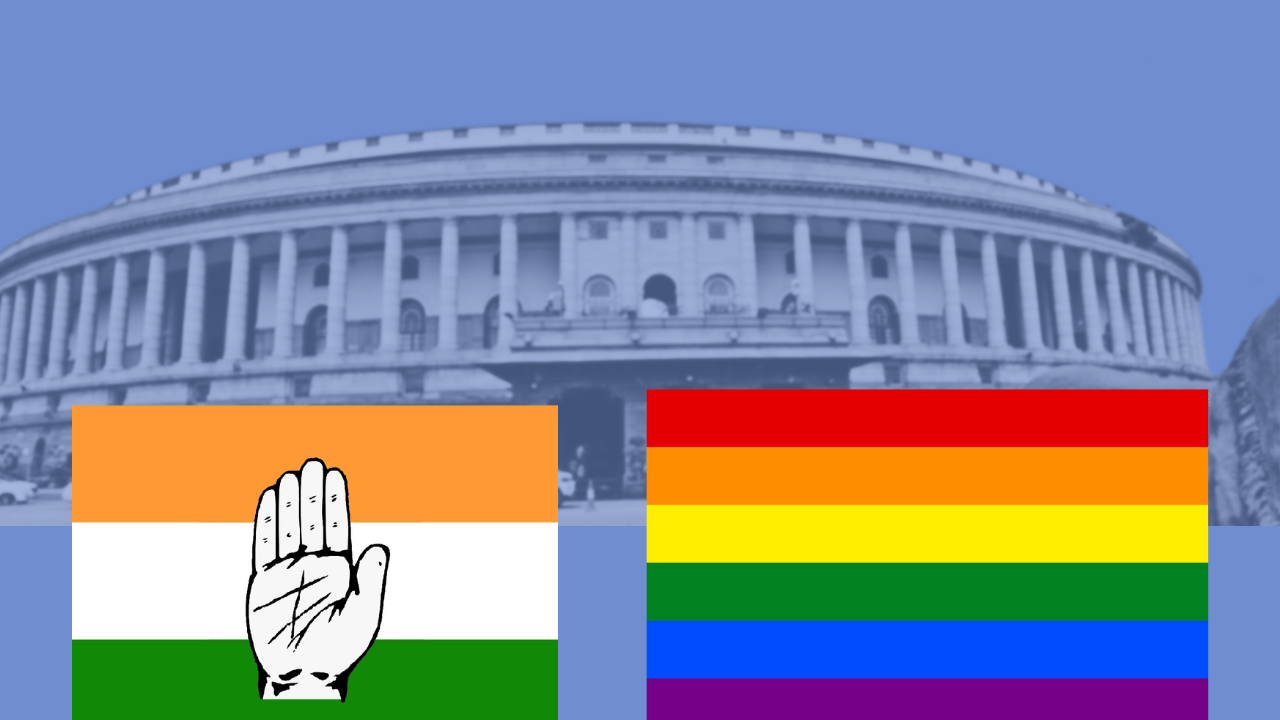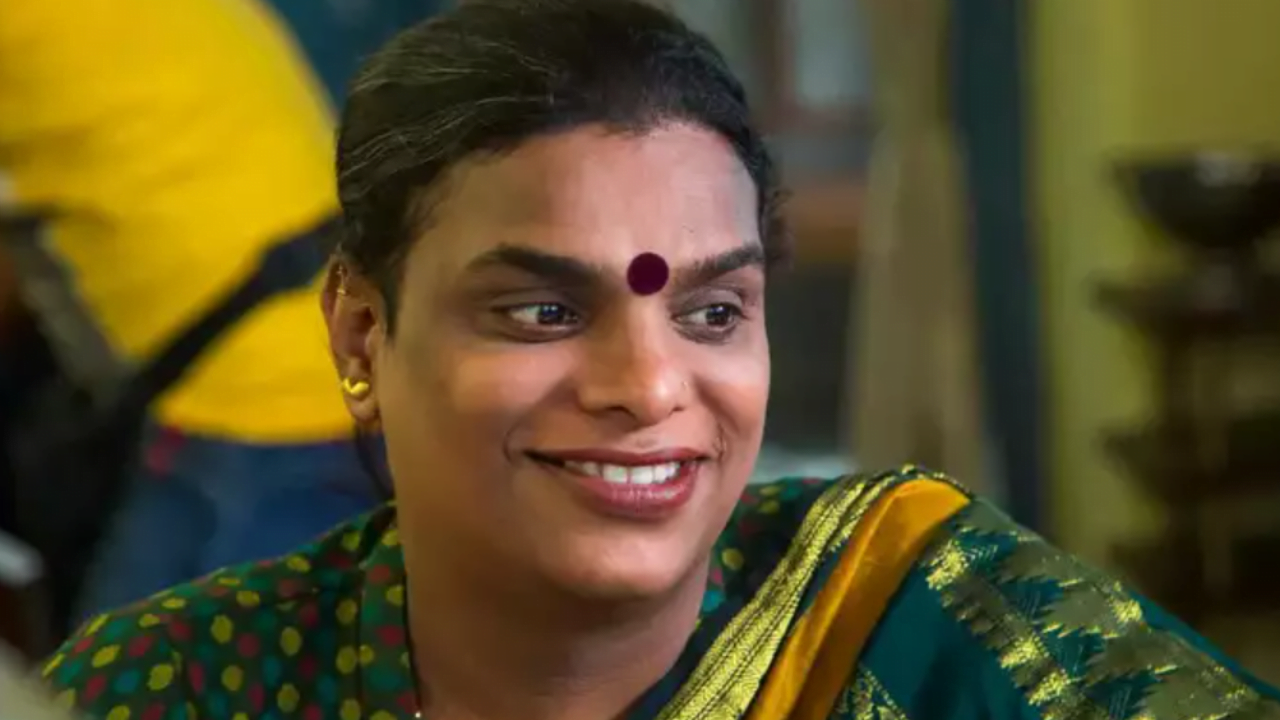Gaylaxy Magazine works towards creating an online safe space for LGBTQIA+ people in India. The magazine was founded by Sukhdeep Singh in 2010 when he was still pursuing his B.Tech in college. The first issue of the magazine was published online in January 2010, almost 6 months after Delhi High Court read down the law criminalising homosexuality. With the second issue of the magazine, Gaylaxy saw the launch of its website. The website also has a dedicated Hindi section that is managed by Sachin Jain. The founder of Gaylaxy Magazine and the current editor-in-chief, Sukhdeep Singh, was awarded the January Marie Lapuz Youth Leadership Award for 2016.
Today, Gaylaxy Magazine has successfully become a worldwide presence, with its contributors and readers coming from India, United States, UK, Pakistan and Canada. Gaylaxy Magazine has become an essential medium for the queer community to stay updated about the latest developments on queer issues in India and abroad, as well as to express their own voice.
We, at FII, had the immense pleasure to speak with its editor-in-chief, Sukhdeep Singh, about his remarkable journey of creating and managing Gaylaxy Magazine.
SG: What was the story and motivation behind the genesis of Gaylaxy Magazine?

Sukhdeep Singh, founder and editor-in-chief of Gaylaxy Magazine
SS: I had come out in my college in 2009. That was also the time when the Delhi High Court judgement decriminalising homosexuality had come out. The initial few months were very turbulent as I was the only openly gay person in my college; I was asked a lot of questions and such. So, I basically wanted to contribute to the community as well as write and share my own experiences. But I didn’t know of any LGBT-focussed website or magazine that I could have contributed to. There were a couple, like The Queer Chronicle. Pink Pages had also just started at that time. However, I didn’t find them to be best suited to what I was looking for in an LGBT magazine.
And that’s when the idea struck me. In December 2009, the idea came to me that perhaps I should start something on my own. Maybe host it on a free server or something. Since I was already involved in my college newsletter for the last 2-3 years, I was familiar with the processes of designing, editing and such. So, that’s how I decided to launch an LGBT magazine. That was the whole motivation behind it. I just basically wanted to write and express myself and so, I thought I should start something on my own.
SG: What challenges did you face during the early years of Gaylaxy Magazine, it being a platform for the voice of queer people in India? Do any of these challenges still prevail?
SS: Challenges were on various fronts. The first was that I was a student when I started the magazine – a young student who had just come out. I didn’t know anyone else who was gay. There was another guy in college who had come out to me after my coming out. But that was just about it. I did not know any other gay person. I wasn’t as familiar with the community as I am today. I didn’t know anyone from the community and didn’t know how to reach out to people once I had published the magazine. Then there were the obvious monetary challenges too. Being a student, I did not have a lot of money or resources to even launch a website, which is why it was hosted initially on issuu.com, which is a free hosting service. Only after the launch of the first issue, that I was told by friends I should get a website instead. Then we all pooled in money and they helped set up the website and it was launched with February 2010 issue.

Earlier issues of the Gaylaxy Magazine
The other challenge, one that still remains, was getting the writers. For the first issue, I had written all the articles. But for the future issues, we needed writers, which was quite difficult seeing as we couldn’t pay the writers then. We are unable to pay our writers and contributors at the moment too. So, it becomes a huge challenge to continuously motivate our existing contributors to keep contributing and how to find new writers to write for us. Even when we do manage to find some new writers, many times they commit to writing for us but that doesn’t really happen. And since it’s a voluntary task, we can’t really force them, you know. Also, as Gaylaxy Magazine doesn’t make much money, I have to bear the costs of the website’s server space as well. These are some of the continuous challenges we face. These challenges were there in our initial years and still prevail for us.
SG: Gaylaxy Magazine saw the launch of its website with the publishing of its second issue. And you’ve switched completely to a digital website. What inspired this decision? Has it been beneficial in any way?
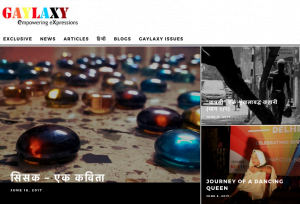
Website of Gaylaxy Magazine
SS: As I said, initially it was launched as a magazine, which required more resources like I would need to design the pdf, among other things. For the first six months, when I was still in college, I had my friends to help me. I’d go to them and ask them to design the magazine for me. But once I moved out from college, and this was also one of the bigger challenges I faced initially, I couldn’t ever find a good designer. So, alongside writing or editing articles, even the designing part would fall on my shoulders. Something I used to find as a huge challenge since I don’t really consider myself a very good graphic designer. Also, this would further delay the issues. I couldn’t maintain a monthly frequency so I even had to switch to a bi-monthly frequency.
I also realised how much more energy went into the whole process. First I would edit the articles, then I would design them for the pdf. And after the issue was published, I noticed how many people wanted links to their individual articles and because there weren’t any links, they would just take a screenshot of their articles and share that on their social media. So, I found it more convenient to have all the articles online. It was also convenient for people as the accessibility and readability of the articles became better. It became easier to share the articles on social media and for me to maintain them as well. So that’s why I switched from pdf format to website format completely. It becomes easier to read and share articles and also for me to keep a track of how each article is performing.
SG: When the Indian Supreme Court re-criminalized LGBTQIA+ citizens in December 2013, Gaylaxy Magazine created a dedicated Hindi section with an inaugural issue of 8 articles. Since then, in what ways do you feel the expansion of the Hindi section has helped Gaylaxy Magazine?
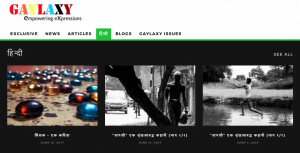
Hindi Section of the Gaylaxy Magazine
SS: The Hindi section of the website was coincidentally launched after the Supreme Court verdict recriminalizing homosexuality, as I was already in talks with Sachin regarding it. I wanted to launch the Hindi section because I felt if we wanted to reach out to more people, we should have content in Hindi too, as English still remains a very class and caste based language. It doesn’t have that kind of reach in India that Hindi probably does. Also, if you look at it, there weren’t many online resources on gender sexuality and LGBTQIA+ in Hindi.
So, I was already talking to Sachin about a few months before the December verdict, but things hadn’t worked out then. But when the verdict came, Sachin contacted me and said we should move further with the idea. That’s how our Hindi section was launched. The idea was that since there are a lot of Hindi-speaking people and not enough resources in Hindi, our Hindi section would help them. It would help us move out of metro cities and reach to the smaller cities where such resources might be more needed. And now, after several years, we are bearing the fruits of it. Because now when I look at it, our Hindi articles perform much better than our English articles. We get more traffic on our Hindi articles via Google search, which shows people are, in fact, searching in those Hindi terms instead of English. And sadly, there aren’t enough resources in Hindi present online on the gender and sexuality issue. So, Gaylaxy‘s Hindi section performs better than our English section on an average day.
SG: Gaylaxy Magazine released an Android app ‘Gaylaxy’ in 2014, which has been called a “possible first for the gay community” in India by ETCIO.com. How has the app added to Gaylaxy Magazine’s reach? Did you find any benefits or drawbacks of the Gaylaxy app?
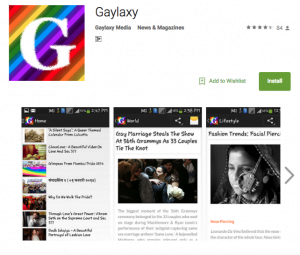
Gaylaxy Magazine’s Mobile App ‘Gaylaxy’
SS: The app was launched because we were getting a lot of traffic via mobile. Our desktop traffic was decreasing and the mobile traffic was increasing significantly. So, I had already been talking to my friend Apurv, who designed the current app. Because if we were to attract more mobile traffic, getting an app was the next step. But the idea wasn’t just to have articles on the app. The initial idea was to make the app a lot more interactive so the community could stay connected. The idea was to have information regarding the events that might be happening in each city on the app as well. But things didn’t work out. My friend left in between and the second version of the app could never be launched. However, the app is still used by several people for reading our articles. Perhaps in future, I’ll look at developing the app further with more features and that’s when it would truly be useful and impactful. Currently, it’s simply used to read our articles.
SG: The queer movement includes diverse gender identities and expressions. How diverse would you say Gaylaxy Magazine is? How do you ensure that all these voices are incorporated in Gaylaxy Magazine?

SS: For us, diversity starts from the composition of our very team. The diversity of our team is in terms of the religions, castes and regions we come from. We aren’t just composed of upper caste Hindu men. For instance, I myself am Sikh. Davidson, on our team, is from North East. One of our team members also comes from the Dalit community. Then we have transgender writers as well. These are all the places and communities that you usually don’t find represented on digital platforms. Though, this gets reflected in the kind of articles that we share at Gaylaxy Magazine. We have shared several articles that talk about the LGBT situation in the North East, what kind work is happening in North East or the problems that people face there. We have carried articles on the intersectionality between Dalit identities and LGBTQIA+ struggle. We have carried articles on homosexuality and Sikhism.
These are the kind of articles you wouldn’t find easily on any other digital platforms. All of this diversity is because of the kind of diverse composition we have as a team. However, I will acknowledge that we lack representation of women in our team as well as on the website. We do have a few women writers who have joined/contributed lately, but the amount of articles on queer women is hugely under-represented. For that reason we try and partner with organisations like FII that publish women related experiences/articles and re-publish that on our website.
Apart from that, I do try to look out for content that I feel might be missing on Gaylaxy and get more diverse voices, it could be dissenting voices or the voices of critiques which may not find space in the usual mainstream media or anywhere else. I try to bring in those diverse voices by asking writers to write for the magazine or by republishing content from their personal blogs whenever possible.
SG: In the seven years since the publishing of the first issue of Gaylaxy Magazine, what changes have you noticed in the treatment of the Queer community in India? Do you think it’s changing for the better?
SS: Yes, I do think it’s changing for the better. When I started the magazine in 2010, if you compare the then media reportage of LGBTQIA+ -related issues to the media reportage of today, especially on Pride marches, it’s not so stereotypical anymore. Back in 2010, when we would do any kind of campaign on Twitter or share our articles on Twitter, we used to get a lot of hate and get trolled a lot. The intensity of this hate and trolling has reduced significantly for us. We don’t see a lot of hate comments or trolling on the articles or links we share on Twitter now. These are some of the very superficial, upper-level changes I can tell you I have noticed over the period of seven years.
SG: What other activities and events does Gaylaxy Magazine organises or partakes in to promote awareness among people regarding the queer movement and issues? How do you plan to take forward the struggle towards social acceptance of the Queer community in India in the coming years?
SS: As of now, we organise several offline events in Delhi and some in Kolkata as well. We have hosted several workshops and events in colleges for not just for the LGBTQIA+ community but also for the larger section of society. We organised a Queer Carnival in Delhi during the Pride Month last year. In Kolkata, we organised film screenings and held a workshop on gender and sexuality in Presidency College. We went to IIT Delhi during their cultural fest and held an interactive session with the students, involving various kind of activities. We have also hosted panel discussions and a Wikipedia Edit-a-thon with Feminism in India itself. We don’t just plan one kind of event, but various different kinds to cater to a wide range of people and their interests.
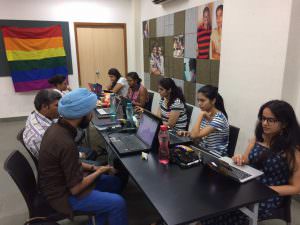
Wikipedia Edit-a-thon on Queer Pride Marches in India
We plan to take forward this struggle for social acceptance by expanding our offline reach to various cities. A lot of our focus will be on interacting with the youth as they are the next generation who’ll lead the nation. So, organising events in colleges will get a lot of our attention. With these various kinds of events, we will try to not only further our work but also the queer community’s struggle as a whole.
SG: What’s in store for Gaylaxy Magazine in the future? Are you planning to launch any new endeavours alongside your current ventures?
SS: In the future, I’m planning to take up Gaylaxy Magazine as a full time thing. We’re planning to host more frequent and larger events, like the screening of the film Sisak that we hosted recently that had received the largest number of registrations so far. We are also planning to generate a lot of video content. We plan to make a couple of documentaries and some short video interviews of personalities. Video would be one of the main focuses in future and we will try to have more video-related multimedia content. And as I have said, we will also be focussing on offline events, but not just in Delhi but probably also in Kolkata and some other cities wherever we can expand.
All images from Gaylaxy Magazine’s website.
